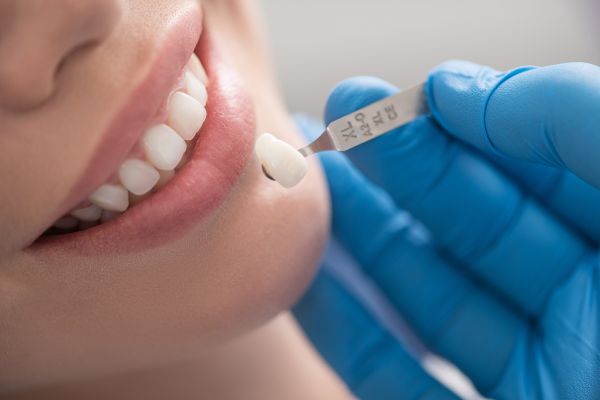Repairing Damaged Dental Veneers

Porcelain dental veneers are one of the most innovative inventions in the world of cosmetic dentistry. Dental veneers can make poor-looking teeth appear alluring, sturdy and natural. But what happens when they get damaged due to a mishap or accident? This article focuses on factors that affect the lifespan of veneers and the process involved in repairing damaged dental veneers.
The durability of veneers
Dental veneers typically require no intense maintenance and only demand basic oral hygiene such as brushing, flossing and routine dental checkups. With proper oral hygiene, dental veneers can last up to 10 years.
If veneers are properly placed, the chances of damage are slim. In contrast to composite veneers that can be repaired, damaged porcelain veneers usually must be replaced. Therefore, it is essential that you shun bad habits that may damage your veneers, such as teeth grinding or clenching, chewing ice, nail-biting and opening things (like packages) with your teeth.
Repairing damaged or defective veneers
Porcelain veneers are quite sturdy, and breakages, defects and chips are rare. When damage occurs, it is often because the tooth was not set correctly or the veneer was not properly bonded. Also, malocclusions can chip or dislodge veneers, which is why a cosmetic dentist should correct teeth misalignments before placing veneers.
Your dentist can only make repairs with dental bonding or composite materials, not porcelain. It may be possible to create a satisfactory result with plastic, but over time, the less durable material (composite) will deteriorate as evident by chipping and discoloration and will stand out from the veneer.
If the repair is done on points that experience significant pressure or force, such as the biting edges, creating a bond between the porcelain veneer and the composite patch will probably be hard or impossible.
Minor chips
If only a tiny part of the porcelain is chipped, the best option is to file and abrade the veneer to even out the chip. This solution is lasting, although it may require recontouring nearby teeth in a similar way to maintain the symmetry of the smile.
Cracks
You may notice crack lines on the veneers even though they are still intact on the teeth. If this happens, the dentist will be unable to determine the bond between your tooth and the fractured part. Also, the crack may get discolored and stain the veneer’s appearance.
Repair is often not possible in this situation, as the dentist may not be able to fill the crack or bond different porcelain pieces together. If the veneer breaks and no piece is lost, the dentist may decide to reattach the veneer with a translucent bonding material. The treatment could cause discoloration around the fracture point and weakness that could lead to a second breakage. Replacing the veneer completely is usually the best option.
In conclusion
The process of bonding dental veneers to the teeth is complex. Since the procedure is permanent, it is advisable to choose a professional cosmetic dentist that can give you the best, most lasting outcome.
Request an appointment here: http://www.riversdentistry.com or call Rivers Family Dentistry at (979) 710-2216 for an appointment in our Bryan office.
Check out what others are saying about our dental services on Yelp: Dental Veneers and Dental Laminates.
Related Posts
Veneers can be your ally if you want to hide dental imperfections. These clever tools are thin shells custom-made to look like teeth in color and shape. Sometimes, veneers are called dental porcelain laminates or porcelain veneers. These are attached to the front surface of your teeth to improve their appearance. If you want to…
Veneers can improve a patient’s smile in many ways by covering up imperfections in teeth with natural-colored shells. Staining on front teeth is one of the most popular reasons patients choose this type of restoration. People who have lived with discolored teeth can feel uncomfortable smiling in public, and other treatment options may not be…
Dental veneers, ceramic or composite shells that fit over teeth to restore damage or make cosmetic corrections, are a long-lasting, durable treatment, but do eventually need to be replaced. This guide covers some of the questions patients often have about replacing this dental work.Not every set of veneers lasts the same amount of time, but…
Dental veneers can transform a smile. The American Dental Association defines these as "thin, custom-made shells crafted of tooth-colored materials designed to cover the front side of teeth." These restorations are typically made of porcelain or resin and can last for many years. There are some situations in which veneers need to be replaced; most…


